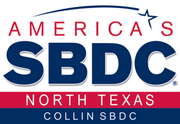Cash is KING!
How to Create a Simple Financial Process that Helps You Follow Your CASH!
In the uncertain times we are living in, cash is now more important than ever to give you a bit more stability in the event of something crazy like a pandemic happens. Cash is King! Been there, done that, right? I can help you create a financial process that helps you follow your cash!
I have found that one of the challenges small business owners face today is understanding accrual vs. cash accounting and the importance of both for your business today. While the majority of retail businesses file taxes on an accrual basis, their financial statements don’t give them a clear picture of available cash that they have available to them to operate the business.
What’s the difference?
Accrual based accounting measure cost of goods sold and gross margin. Cost of goods sold is just that, the cost of the goods that you sold during the measured period of time. This allows you to calculate your gross margin, which incorporates any markdowns or inventory losses you have taken over a period of time.
Cash flow planning measures your purchases and cash margin. Purchases are inventory receipts you have received over a period of time, regardless if you have sold them or not. Cash margin is calculated to give you the total amount of cash you have available to pay your expenses.
Let me give you an example:

What this is telling you is the business on paper made a profit of $64k – you pay taxes on this $64k. The business had a negative cash flow, which essentially means the $64k on paper is not sitting in our bank account and you have to pay taxes on it as if it was.
Where do you go from here?
1. Create a break-even analysis where you organize your expenses fixed vs. variable AND understand your balance sheet expenditures and what that cost is every month. Fixed expenses don’t change and should be budgeted on an annual basis. Variable expenses are variable based on sales going up or down.
- Inventory Purchases: this is a simple number that can easily be determined based off of your initial markup (IMU).
- Fixed expenses: rent, management salaries, office supplies, travel & entertainment, etc.
- Variable Expenses: selling payroll, freight in from vendors (the more you buy, the more freight you pay), marketing/advertising, credit card processing fees, etc.
- Balance Sheet Expenditures: fixed loan payments, LOC payments anything in relationship to servicing debt EXCEPT credit cards. Why you ask? Because whatever the expense is, it is accrued on your financial statement so the “expense” is already booked as a payment.
- Something to note: while credit card balances are seen on the balance sheet and the expense accrued on the P&L statement, managing cc payments and paying down your balances should be done on a 12 week rolling cash flow planning worksheet.
2. Use a rolling 12 week cash flow document that incorporates weekly inventory purchases, fixed expense payments, balance sheet expenditures, variable expenses based on weekly sales goals AND credit card payments as they come due. Every week is not equal – that is precisely why the cash flow document is a working.
It’s crucial to update your cash flow early each week to reflect actuals and update projections. Some weeks you may have surprises – good and bad. Follow the original vs. actual to monitor successes and potential obstacles.
While this might sound overwhelming, trust me when I say once you have everything outlined, the pieces will all come together. Keep it simple, stay on top of it and you won’t have any surprises.
CARES Program blog contributed by:
Margo Kopman, owner of Project Retail Boutique Consulting Firm, is a veteran marketing speaker and workshop leader with over 200 successful events under his belt. Event organizers and attendees frequently comment on the nature of the practical, actionable “takeaway” value of his presentations.
Learn more aboutMargo’s seminars:, Financials / Breakeven / Cashflow (Retail), Sales Forecast / Merchandising Plan (Retail), and How to Best Use and Incorporate Client Data into Marketing/Promotional Plans and Customer Outreach (Retail) and how to access customized consulting through the Collin SBDC CARES Program.




